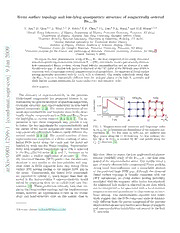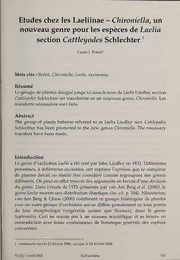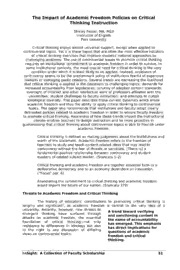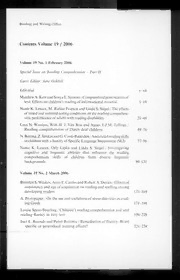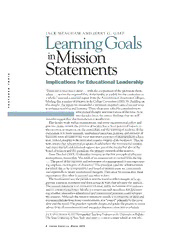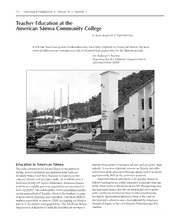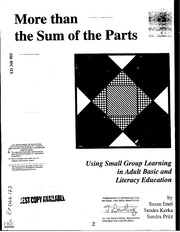
ERIC ED368905: More than the Sum of the Parts: Using Small Group Learning in Adult Basic and Literacy Education. A 353 Special Demonstration Project. PDF
Preview ERIC ED368905: More than the Sum of the Parts: Using Small Group Learning in Adult Basic and Literacy Education. A 353 Special Demonstration Project.
DWUMENT RESUME ED 368 905 CE 066 123 AUTHOR Imel, Susan; And Others TITLE More than the Sum of the Parts: Using Small Group Learning in Adult Basic and Literacy Education. A 353 Special Demonstration Project. INSTITUTION Ohio State Univ., Columbus. Center on Education and Training for Employment. SPONS AGENCY Ohio State Dept. of Education, Columbus. Div. of Educational Services. PUB DATE 94 NOTE 90p. AVAILABLE FROM Publications, Center on Education and Training for Employment, 1900 Kenny Road, Columbus, OH 43210-1090 (order no. SP68: $8 plus $3 postage and handling in Ohio, $3.50 out of state). PUB TYPE Guides Classroom Use Teaching Guides (For Teacher) (052) EDRS PRICE MF01/PC04 Plus Postage. DESCRIPTORS *Adult Basic Education; Basic Skills; Curriculum Development; *Group Activities; Learning Activities; *Literacy Education; Numeracy; *Small Group Instruction; *Staff Development; Student Developed Materials; *Student Role; Teacher Role; Teaching Methods IDENTIFIERS 353 Project ABSTRACT This guide provides practical information that teachers and administrators can use to initiate the small group learning approach in adult basic and literacy education (ABLE). A locator index directs readers to specific topics. Chapter 1 describes small group learning, provides a rationale, and points out advantages and disadvantages for learners, instructors, and administrators. Chapter 2 provides tips for managing small group learning. It discusses the changed roles of teachers and learners and the nuts and bolts of facilitation. Chapter 3 concentrates on preparing learners for small group learning and suggests some activities for introducing the approach. Chapter 4 contains examples of activities that can be used to develop the literacy and numeracy skills of adult learners, including tips for developing additional activities. Chapter 5 describes a process for involving learners in generating materials through the use of scenarios or simulations based on learners' life experiences or current context. Chapter 6 covers staff development to support small group learning. Chapter 7 provides a summary of advice for teachers on using small groups and instructional materials. Appendixes include the following: a list of 41 references; an annotated bibliography that includes information about 16 print resources for further information; addresses of Ohio's'state and regional literacy resource centers; and an ERIC Digest, "Managing Your Professional Development." (YLB) More than ri 44,-",4 , . Parts .44-t4414,,V;p14 -1)14'4,1 .`*- the Sum of the ts.....enNa r ; 40 4.4 .2: 40+ . 11* + + U S DEPARTMENT OF EDUCATION Oifice ol Educational Researcn ant -onovement UCATIONAL RESOURCES INFORMATION CENTER (ERIC) This document has been reproauced as received from the person or ceganization originating it. 0 Minor changes have been mac 3 to improve reproduction gustily Using Small Group Learning Points of view or opinions stred in this document do not necessarily represent in Adult Basic and otficiat OERI position or olic-r Literacy Education by "PERMISSION TO REPRODUCE THIS AVALILL .31 COPY MATERIAL HAS BEEN GRANTED BY Susan Imel tr-/ Sandra Kerka / .1 v Sandra Pritz TO THE EDUCATIONAL RESOURCES INFORMATION CENTER (ERICI 2 More than the Sum of the Parts: Using Small Group Learning in Adult Basic and Literacy Education A 353 Special Demonstration Project by Susan Imel Sandra Kerka Sandra Pritz Center on Education and Training for Employment College of Education The Ohio State University 1900 Kenny Road Columbus, OH 43210-1090 1994 FUNDING INFORMATION Enhancing Quality in Adult Basic and Literacy Education through Project Title: Small Group Learning Source of Contract: Ohio Department of Education Division of Educational Services Columbus, Ohio 43266-0308 Contractor: Center on Education and Training for Employment The Ohio State University Columbus, Ohio 43210-1090 Executive Director: Ray D. Ryan Disclaimer: Funds for producing and distributing this publication were provided by the Ohio Department of Education under authority of Section 353 of the Adult Education Act, P. L. 100-297 as amended. Opinions expressed do not necessarily reflect those of the Ohio Department of Education nor the U.S. Departmnt of Education, and no endorsement should be inferred. Discrimination Prohibited: "No person in the Title VI of the Civil Rights Act of 1964 states: United States shall, on the grounds of race, color, or national origin, be excluded from participation in, be denied the benefits of, or be subjected to discrimination under any program or activity receiving Title IX of the Education Amendments federal financial assistance." of 1971 states: "No person in the United States shall, on the basis of sex, be excluded from participation in, be denied the benefits of, or be subjected to discrimination under any education program or activity The Enhancing Quality in receiving federal financial assistance." Adult Basic and Literacy Education through Small Group Learning project, like every program or activity receiving financial assistance from the U.S. Department of Education, must be operated in compliance with these laws. in Contents Foreword Introduction 1 1. Small Group Learning: What and Why 5 What Is Small Group Learning9 5 Why Use Small Groups9 What Are the Disadvantages of the Small Group Approach? 8 What Are the Advantages of the Small Group Approach? 11 Summing Up 13 2. Small Group Learning: How 15 Changing Roles of Teachers and Learners 15 Group Process: The Essentials 17 The Teacher as Facilitator 18 Forming Groups 23 3. Getting Started 27 Preparing Learners for Small Groups 27 Sample Activities for Introducing Group Work 29 4. Learning Activities 35 Generating Ideas 35 Developing Activities 37 Sample Learning Activities 40 5. Developing Learner-Generated Materials 49 What Materials and Why9 49 How9 53 Getting Started 56 Sum mary 62 iv 6. Staff Development to Support Small Group Learning 63 Staff Development: The Administrative Perspective 63 Staff Development: The Teacher Perspective 65 7. A Final Word 67 References 69 Appendices 75 6 Foreword Traditionally, a one-on-one individualized approach to instruction has predominated in adult basic and literacy education. Recently, the use of small groups has been advocated as an effective approach for improving the quality of adult basic and literacy education and support for the use of the small group approach is expanding. Despite the growing evidence supporting the use of small group learning as a strategy that will improve the quality of adult basic and literacy education services, there has been little practical information to guide the implementation of this approach. The development of this publication was funded to ad- dress the need for practical information that can be used by teachers and administrators to initiate the small group learning approach in adult basic and literacy education. Its development was based on information from existing publications as well as information obtained from Ohio practitioners experienced in using the small group learn- ing approach. Of special importance in this regard are the following individuals who participated in a one-day meeting and discussed their experiences as well as made recommendations for the contents of the publication: Charley Flaig, Northwest Local Schools, McDermott, Ohio; Amy Leedy, Montgomery County Joint Vocation- Clayton, Ohio; Barbara School, Shapiro, Leo al Yassenoff Jewish Community Center, Columbus, Ohio; and Michael Jones, Consultant, Adult Basic and Literacy Education, Ohio Department of Education. The publication was developed by Susan Imel, Project Director, and Sandra Kerka and Sandra Pritz, both of whom served as project staff. Janet Ray served as word processor operator. Prior to publication, the guide was reviewed by the Charley Flagg; Barbara Shapiro; following people: Michael Jones; Sue Polzella, Kettering Adult School, Dayton, Ohio; Ann Carr, Mid-East Ohio Vocational School District, Zanesville, Ohio; Alayne Michaelis, Licking County Joint Vocational School, Newark, Ohio; 7 vi and Bettina Lankard and Nancy Puleo, Program hssoci- ates, Center on Education and Training for Employ- ment, The Ohio State University. Ray D. Ryan Executive Director Center on Education and Training for Employment The Ohio State University 8 Introduction You get the idea that there's no pressure, then In a group, the class works you can relax. together. One-on-one has more pressure. With a tutor you have to use the skill that you've That's motivating. learned in group. I love to be in a group. We help each other, like I love to be around people, don't each other. I know what it would be like to be separate. expected to be with an individual tutor, but I like It helps me to help other people, it the group. makes me feel good about myself We love each It's something other, help each other to learn. I never finished high to tell your grandkids. school, I have to do it for myself (Bingman et al. 1990, p. 6) These comments from adult learners in Tennessee testify to the value of small group learning in adult literacy and The learners quoted have positive basic education. Teachers in feelings about learning in small groups. Tennessee are also enthusiastic about using small groups: When we get in groups we are all adults and we There is no distinction. teach each other. We We have multiple tutors in the team teach. group; we alternate nights. Every class is a new experience. They get caught up in it, answer each other's questions. We were scared to death of groups at first. But If we continue with the way tutoring services are set up now (one-on-one), there is no way on after the first class, we saw there was no need to God's green Earth that we are ever going to be frightened. Lessons fell in place once we got reach more than 10 percent of the people in need the group together. (Bingman et al. 1990, p. 5) of literacy services. Yet, practitioners have been slow to adopt small group (Toni Cordell in McAdoo and Gordon 1993, learning. Many stick to the more tradi.tional one-on- P. 1) (ibid.; to individualized approach instruction one, Roskos 1990). Undoubtedly, there are a number of rea- sons for this reluctance to use small group learning habit, fear, and lack of knowledge about how to use small group learning effectively. 3 2 This guide provides information that will help you use small group learning in adult basic and literacy educa- It is based on both the experiences of Ohio adult tion. basic and literacy education (ABLE) practitioners and Several ABLE prac- information from the literature. titioners who regularly use the small group approach met with project staff and discussed their experiences. They provided valuable information not only about using small groups in ABLE settings, but also about what types of information the publication should contain. Later, these individuals reviewed the proposed outline To collect additional practice- for the publication. based information, other Ohio ABLE practitioners were interviewed. Existing print resources were also reviewed. A search of the ERIC database resulted in a number of publica- tions about small groups, including some developed abroad. An annotated bibliography of print resources in Appendix A includes information about many of the publications that were used to develop this guide. Here is what you will find in this guide: Chapter 1 DESCRIBES small group learning, pro- /. vides a RATIONALE, and points out ADVAN- TAGES AND DISADVANTAGES for learners, instructors, and administrators. Chapter 2 provides TIPS FOR MANAGING small o. group learning. It discusses the CHANGED ROLES of teachers and learners and the nuts and bolts of FACILITATION. Chapter 3 concentrates on PREPARING LEARN- ERS for small group learning and suggests some activities for introducing the approach. Chapter 4 contains examples of ACTIVITIES that can be used to develop the literacy and numeracy skills of adult learners, including tips for developing additional activities. Chapter 5 describes a process for INVOLVING LEARNERS IN GENERATING MATERIALS through the use of scenarios or simulations based on learners' life experiences or current context. l 0
The list of books you might like

The Subtle Art of Not Giving a F*ck

The 48 Laws of Power

The Strength In Our Scars

Shatter Me Complete Collection (Shatter Me; Destroy Me; Unravel Me; Fracture Me; Ignite Me)

By Invitation Only: Exclusively Yours Private Party Secret Encounter

NASA Technical Reports Server (NTRS) 20060047794: An Exercise in Technology Prioritization in a Competitive Environment
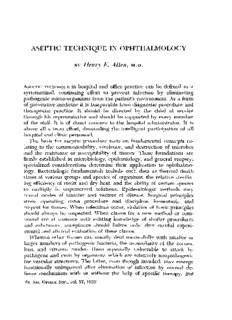
BY Henry F. Allen, MD

Busardo 2 Anabolic-MS_CN
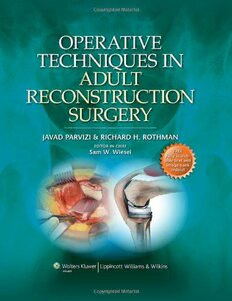
Operative Techniques in Adult Reconstruction Surgery

Portraiture and Photography in Africa
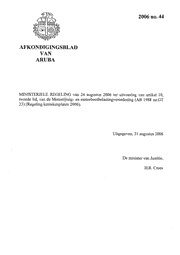
Afkondigingsblad van Aruba 2006 no. 44

Masters in Digital Marketing

bölüm 1
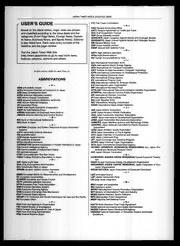
The Japan Times 2006: Index
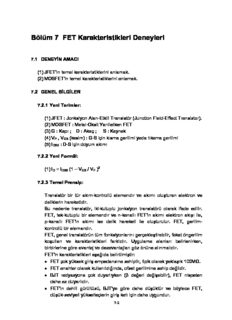
Bölüm 7 FET Karakteristikleri Deneyleri

Bölüm 2 sayfa 1.backup.fm

